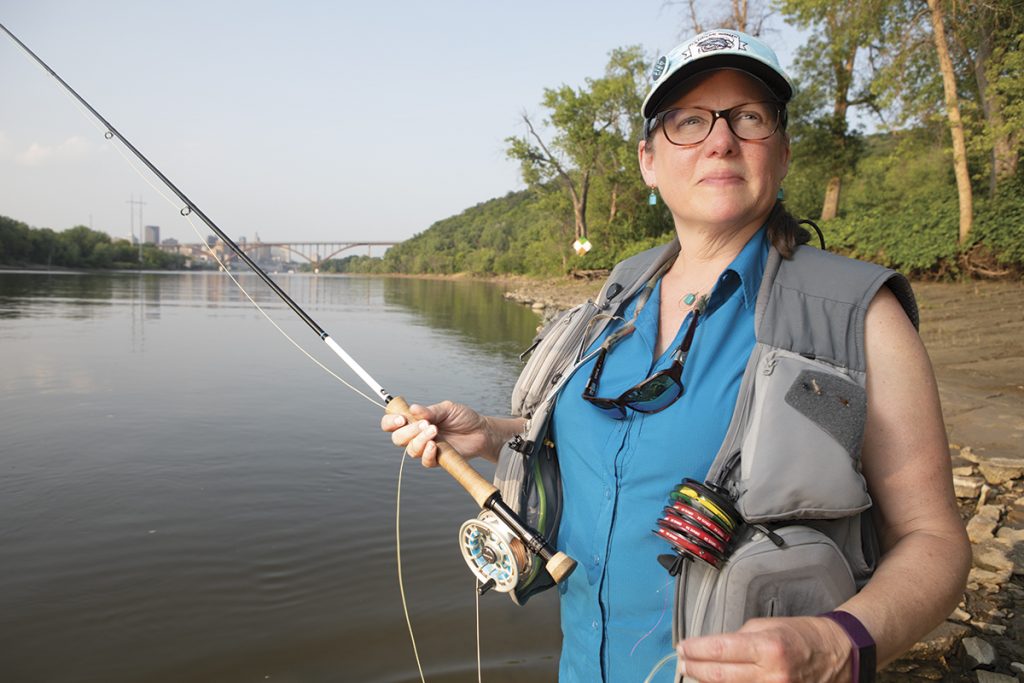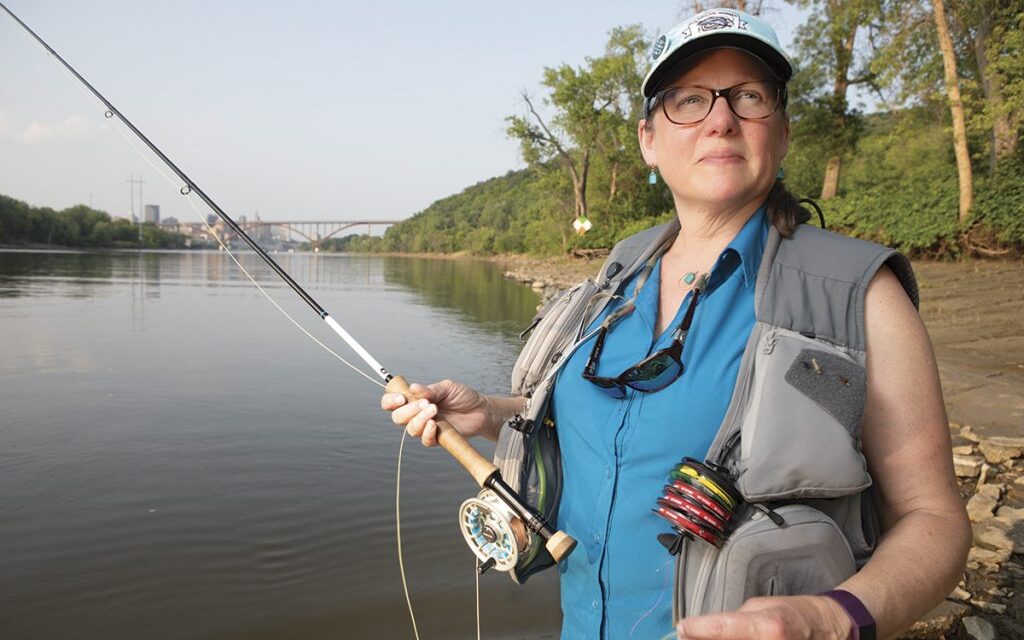
I grew up in Michigan near a river where signs warned “No Swimming Allowed.” The water was polluted with toxic chemicals. I had the privilege of parents who took us camping on the famed AuSable River, north of where we lived. There I canoed, swam, and explored to find crayfish, minnows, and watercress. This was during a time when the news often featured stories about rivers catching fire. In 1972 the Clean Water Act was signed into law. At the time I had no idea how these experiences and events would later influence my life.
I have always been drawn to rivers and to the plants, animals, and insects that live in and along them. Growing up, I also fished for trout with spinning gear and worms. I remember the joy of watching trout in a clear creek moving easily into the current to feed. Those memories of watching the trout later encouraged me to take up fly-fishing in my thirties when I discovered the spring-fed streams of southeastern Minnesota.
My older brother, Mel, introduced me to fly-fishing after he and I found ourselves living in Minnesota because both of our spouses are from here. When our children were young, he discovered the Driftless Area with its spring-fed trout streams and limestone bluffs. This is the southeastern corner of Minnesota, and includes nearby Iowa and Wisconsin, where glaciers did not flatten the landscape. We camped in and explored this region with our kids.
I took a weekend class at an environmental learning center and learned fly-fishing. Like many beginner fly-fishers, I began at Whitewater State Park near Winona when I started fishing by myself. There I learned that the better one understands the cycles of the stream, the easier it is to catch fish.
Being on the river so often opened my eyes. I became especially interested in the insects trout were eating, so I learned about their life cycles and how those related to the seasons. Aquatic insects are indicator species of clean water; if the water is not clean, the insects cannot survive. I learned which flowers bloomed when certain insects were hatching. I shared the stream with many species of birds who fed on the insects and the fish. I became acquainted with the various furry animals along the streams. I came to understand how they all depend on clean water.
After I gained enough confidence and experience, I began mentoring beginners through the Minnesota Department of Natural Resources and Fly Fishing Women of Minnesota (FFWMN), which was started in 1990 to promote personal enrichment for women through fly-fishing. When I started, women made up a small percentage of fly-fishers. In the past ten years, FFWMN has grown from 80 to 120 members.
I am inspired by the women I teach. Many have experience in the outdoors in other areas and understand the need for clean water. Each person who cares about clean water can help to protect the limited resources in our state, our country, and this planet, so I include a discussion of water conservation in my classes.
Many people learn to fly-fish from someone they know. More women and people of color are fly-fishing, but the popular image of a fly-fisher is still a white male. I am working to reach populations that are underrepresented in fly-fishing by volunteering to teach youth and others at programs in city parks.
Fish Kill
There is a fish kill every few years in the Driftless Area. Fish kills happen when a large number of fish unexpectedly die over a short period of time. It is usually attributed to farming practices and heavy rains. The rivers and topsoil of this region were heavily damaged by row farming on hills; a massive amount of soil was eroded and buried the town of Beaver in the early 20th century. Farmers now contour-farm these hills with grasses planted where the water runs off, but the current regulations and laws do not prevent the runoff of nitrates into the water. Additionally, the unique soil quality in the region, including karst geology, makes the groundwater in this area especially vulnerable to contamination.
In May, myself and a coalition of ten groups, including Minnesota Center for Environmental Advocacy (MCEA), Land Stewardship Project, Izaak Walton League, Minnesota Trout Unlimited, and Minnesota Well Owners’ Organization, participated in a Winona County Clean Water Forum in Lewiston, the location of the most recent fish kill in the region. The forum was to inform residents about nitrate pollution in the groundwater and the long-term health effects of continued exposure to nitrates. It encouraged well owners to regularly test their water.
Last spring, the MCEA petitioned the EPA on behalf of the residents to use emergency authority to address the nitrate contamination of groundwater in southeastern Minnesota caused by industrial agriculture and concentrated animal feeding. Advocates want the EPA to declare “a moratorium on new concentrated animal feeding operations in Minnesota’s karst region until nitrate levels decline.”
The trout stream fish kills represent acute agriculture mismanagement. They are indicators of deep environmental problems in these streams and aquifers resulting from agriculture practices. The coalition is working to schedule another informational forum, possibly in Winona. We need more people involved to find and implement solutions.
Monta Hayner (she/her) is an Orvis-endorsed fly-fishing guide through the Driftless Fly Fishing Company in Preston. Monta volunteers to teach and mentor youth and women through Project Healing Waters and Trout Unlimited.






